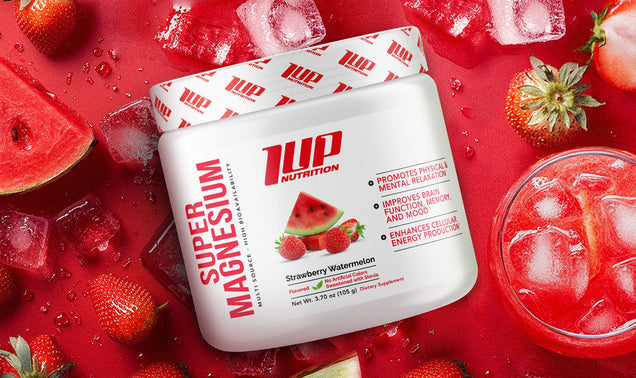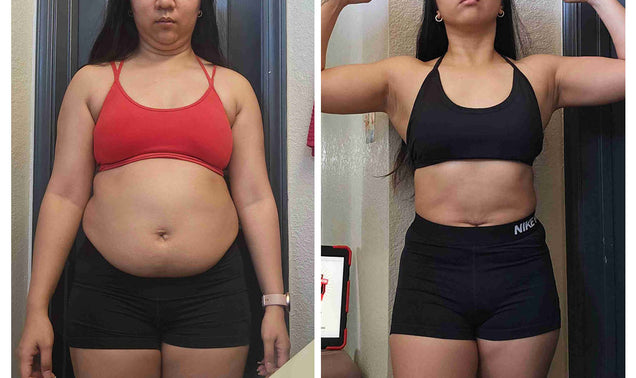Hypertrophy is most often associated with bodybuilders, physique athletes, and gym bros chasing gains, and it’s true. Those individuals are extremely interested in hypertrophy.
BUT…
Hypertrophy is vitally important to us all -- no matter our profession, vocation, or hobby.
The reason we say that is, in its most basic terms, hypertrophy is about building muscle.
You may not realize it, but building and maintaining muscle is an essential component of longevity and overall health.
Today, we take a closer look at why building muscle is important, especially as we age, and how to build muscle effectively.
Why is Hypertrophy Important?
Let’s clear something up first.
Technically speaking, hypertrophy refers to the growth of tissue, including vital organs like your liver and heart. If you have an enlarged liver or heart, especially as you get older, it can be a warning sign of a potentially serious medical condition.
When we refer to hypertrophy, we mean muscle building.
Why is building muscle important?
For starters, muscle mass is an important indicator of longevity.[1] Basically, elderly adults who have more muscle (and strength) are more resilient and have a lower risk of all-cause mortality.
Second, muscle plays a critical role in cardiometabolic health. It stores glucose for energy (glycogen), helping to regulate blood sugar levels and improve insulin sensitivity. This can help reduce the risk of type 2 diabetes and other chronic lifestyle conditions.
Third, our bodies naturally start losing muscle mass and strength at a rate of ~1% per year beginning around 40.[2] The age-induced muscle loss (sarcopenia) also contributes to weakness, reduced mobility, lower quality of life, and a higher risk of slips, trips, falls, and fractures.
Fourth, the more lean muscle we have, the more calories our bodies burn throughout the day, even at rest.
Finally, building lean muscle gives our bodies curves in the places we want, helping us develop the shapely physique we all want.
Metabolism and Building Muscle Mass
Building muscle boils down to two biological processes -- anabolism vs catabolism.
To keep things simple, anabolism is the process of building, while catabolism is the process of breaking down. These two processes are in constant flux throughout the day -- our bodies are in a constant state of building up and breaking down various tissues, including those in our muscles.
This is why when you’re focusing on building muscle, you need to be focused on the bigger picture. Basically, so long as anabolism is greater than catabolism over a prolonged period of time (e.g. 12 weeks), muscle growth will occur. On the flip side, when catabolism is greater than anabolism, muscle loss occurs.
Naturally, you may be wondering, “what can I do to increase anabolism and reduce catabolism?” FYI, this is also referred to as a “pro-anabolic environment.”
There are two important things required to boost anabolism (and thus support hypertrophy): resistance training and sufficient protein intake.
How to Build Muscle Effectively: Resistance Training + Protein
As we just mentioned, the two cornerstones of muscle building are resistance training and sufficient protein intake.
Resistance training ignites a cascade of biological processes that activate the mechanistic target of rapamycin (mTOR) -- the pathway that drives muscle protein synthesis (MPS).
Regularly activating this pathway several times per week in a given muscle group tells your body that it needs to maintain its current level of muscle, and (depending on your training) grow it.
However, simply stressing your muscles under mechanical tension (i.e. resistance training) isn’t enough to build muscle. You also need to give your body the raw materials it needs to repair damaged muscle tissue and fuel the construction of new muscle fibers.
That’s where protein comes into the picture.
Protein supplies the literal building blocks (essential amino acids, EAAs) that our bodies require to support protein synthesis and muscle growth.
Without either one of these (resistance training or adequate protein intake), your ability to build muscle effectively is severely compromised.
Training for Muscle Hypertrophy
To build lean muscle and strength, you must stress your muscles against resistance. Put another way, you need to gradually increase the tension that you expose your muscles to (i.e. squats, deadlifts, pull ups, rows, push ups, overhead presses, etc.). This tension provides the “signal” or stimulus that your muscles need to adapt and grow.
Research indicates that to effectively build muscle you should perform between 10-20 “hard sets” per week per muscle group. You can divide up the sets across the week as you like using a variety of workout programs, including full body, upper/lower, push/pull/legs or a body-part split. If you’re really trying to “optimize” your workout programming, you would train each muscle group at least twice per week. However, if you can only train each muscle group once per week (or you prefer to train a muscle group really hard once a week), then you can still get great results.
If you’re not sure how to build a well-rounded workout program, don’t worry. We’ve got you!
The 1UP Fitness App provides customized training programs tailored to your goals and preferences, for FREE!
Something else you should keep in mind is that hard training is only part of the key to muscle hypertrophy -- you also need to fuel your body with proper nutrition and get enough rest and recovery.
Protein, carbohydrates and healthy fats provide the essential nutrients your body needs to repair, recover and build.
How Much Protein Do I Need to Build Muscle?
Experts recommend an intake between 1.6-2.2 grams of protein per kilogram of bodyweight.[3]
If you don’t feel like doing a bunch of unit conversion between pounds and kilograms, this averages out to ~1 gram of protein per pound of bodyweight. So, if you weigh 125 pounds and want to build muscle, you should aim to consume about 125 grams of protein each day.
Consuming this amount ensures your body has enough “raw material” to repair damaged muscle fibers and support new construction. Keep in mind that it’s OK to consume more protein each day if you enjoy it. As an added bonus, consuming enough protein can help combat delayed onset muscle soreness (DOMS).
Plus, as we get older our bodies naturally become “anabolic resistant” which means they are less efficient at utilizing the protein we eat and will likely need to consume higher amounts of protein to satisfy our body’s requirements.
What Are the Best Protein Sources for Building Muscle?
The best protein sources for building muscle include:
- Lean red meat (beef, bison, venison, elk, etc.)
- Poultry (chicken, turkey, duck, etc.)
- Fish & shellfish
- Eggs
- Dairy (milk, Greek yogurt, cottage cheese, cheese, etc.)
- Protein powder (whey, egg white, vegan protein)
To make sure you’re consuming enough protein each day, make sure to log your food intake and macros, which can be done quickly and easily in the 1UP Fitness App.
Within the app, you’ll also have access to customized calorie and macronutrient goals to help you get the results you want.
Takeaway
Building muscle is most often associated with bodybuilders and competitive athletes; however, if you’re interested in living a long, healthy, and fit life, then you should prioritize it as well. To build muscle effectively, you need to lift weights, eat enough protein, and get quality sleep each night.
It won’t happen overnight (or even over a month), but if you put in the work in and out of the gym, you’ll build lean muscle, shed body fat, gain confidence, and improve your health, well-being, and longevity.
References
- Srikanthan P, Karlamangla AS. Muscle mass index as a predictor of longevity in older adults. Am J Med. 2014 Jun;127(6):547-53. doi: 10.1016/j.amjmed.2014.02.007. Epub 2014 Feb 18. PMID: 24561114; PMCID: PMC4035379.
- Goodpaster BH, Park SW, Harris TB, Kritchevsky SB, Nevitt M, Schwartz AV, et al. (2006). The loss of skeletal muscle strength, mass, and quality in older adults: the Health, Aging and Body Composition Study. J Gerontol A Biol Sci Med Sci, 61: 1059-64.
- Stokes T, Hector AJ, Morton RW, McGlory C, Phillips SM. Recent Perspectives Regarding the Role of Dietary Protein for the Promotion of Muscle Hypertrophy with Resistance Exercise Training. Nutrients. 2018 Feb 7;10(2):180. doi: 10.3390/nu10020180. PMID: 29414855; PMCID: PMC5852756.






